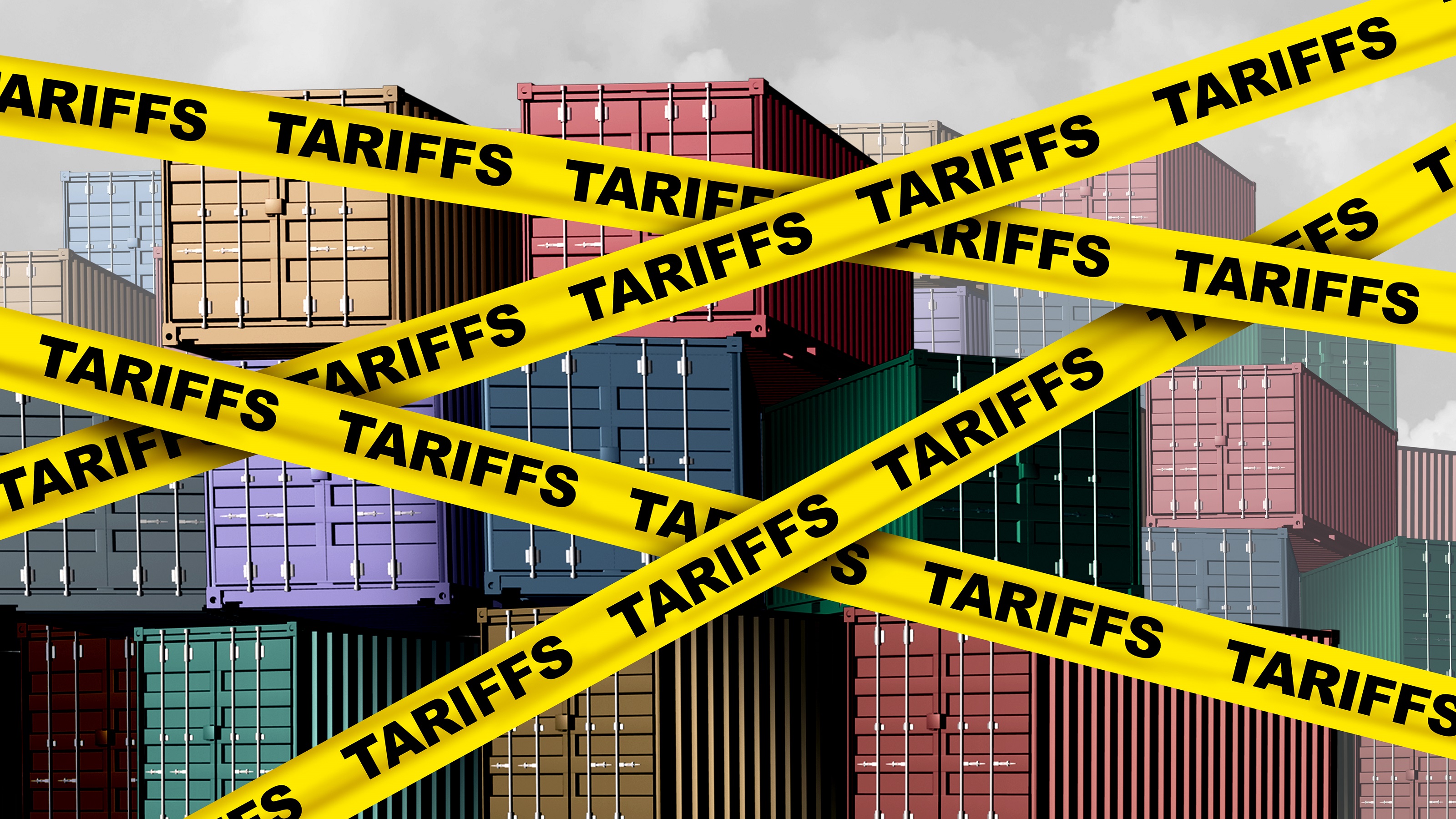Fed Holds Rates Steady, Sets Stage for Easing: What the Experts Are Saying
The Federal Reserve left interest rates unchanged but signaled it could pivot to lowering borrowing costs sooner rather than later.


The Federal Reserve made the widely expected move of leaving interest rates unchanged at a 23-year high on Wednesday, but experts say easing inflation and a softer labor market has the central bank setting the stage for a rate cut as soon as September.
The Federal Open Market Committee (FOMC) wrapped up its regularly scheduled two-day policy meeting by keeping the short-term federal funds rate unchanged at 5.25% to 5.5%. However, language in the rate-setting committee's policy statement indicated that it has become more attentive to the jobs component of its dual mandate, which comprises both stable prices and maximum employment.
"The Federal Open Market Committee (FOMC) judges that the risks to achieving its employment and inflation goals continue to move into better balance," the Fed said in a statement. "The economic outlook is uncertain, and the Committee is attentive to the risks to both sides of its dual mandate."

Sign up for Kiplinger’s Free E-Newsletters
Profit and prosper with the best of expert advice on investing, taxes, retirement, personal finance and more - straight to your e-mail.
Profit and prosper with the best of expert advice - straight to your e-mail.
Although the Fed is preparing the ground for its pivot toward lowering borrowing costs, it remains data dependent, experts say. With two more months of jobs and inflation readings to digest before the next Fed meeting, a rate-cut isn't a foregone conclusion.
"The Fed has laid the foundations for a September easing, provided the next two CPI reports give no cause for alarm," writes Ian Shepherdson, chairman and chief economist at Pantheon Macroeconomics. "Investors seem slightly disappointed by the absence of an explicit signal of a September easing. But the Committee was never going to tie its hands with two more CPI and labor market reports still to come before the next meeting."
Market participants came into 2024 penciling in anywhere from six to seven quarter-point cuts to the fed funds rate, but the Fed in June signaled just one rate reduction before year-end.
However, things have changed since the last Fed meeting. Signs of cooling in the labor market, easing inflationary pressures and rate cuts by other central banks have increased pressure on the Fed to begin loosening monetary policy. Equity markets, in particular, are eager for the FOMC to begin cutting rates, as lower rates boost valuations.
As for when will the Fed cut rates? The September meeting remains the betting favorite, with futures traders assigning a 92% probability to the FOMC enacting its first quarter-point reduction at the fall confab, according to CME Group's FedWatch Tool. That's up from 86% a day ago and 58% a month ago.
With the FOMC's latest rate decision now on the books, we turned to economists, strategists and other experts for their thoughts on what the move means for markets, macroeconomics and monetary policy going forward. Please see a selection of their commentary, sometimes edited for brevity or clarity, below.
Interest rates: the experts weigh in

"The Fed inched toward a rate cut by noting higher unemployment and saying inflation is only somewhat elevated. The data has moved in Powell's direction and now he's getting ready to follow. Given the amount of time before the September meeting, this is what we'd expect at this time. Jobs data on Friday and CPI in two weeks are the next big items. If those go well, we could get clearer messaging from Powell at Jackson Hole in late August." – David Russell, global head of market strategy at TradeStation
"Our view remains that the Fed is recognising too slowly that the labor market is cooling and that high inflation is yesterday's problem. With rates well above neutral, the easing cycle likely will be much faster than markets currently anticipate if, as we expect, the labor market data continue to weaken and inflation prints remain benign. We continue to look for a quarter-point cut in September, followed by half-point reductions at both the November and December meetings, as the Fed scrambles to get ahead of the developing slowdown." – Ian Shepherdson, chairman and chief economist at Pantheon Macroeconomics
"As expected, the Fed is setting the table for interest rate cuts starting at their next meeting in September. Inflation has improved substantially, and we've even seen wages come back to earth the last few months. The reality is inflation is slowing and the Fed doesn't need rates this high anymore. In fact, one very real worry is the economy could slow over the coming quarters and this is why rate cuts are necessary. We think three cuts this year are quite likely." – Ryan Detrick, chief market strategist at Carson Group
"Given the uncertain nature of inflation, the Fed should remain data-dependent and wait for July and August reports before tilting toward an accommodative stance. Remaining on pause is the most prudent position, especially considering the Fed has just two months of inflation data going its way all year." – José Torres, senior economist at Interactive Brokers
"From an economic standpoint, if they cut twice this year, it won't be a huge impact, and the rule of thumb is that it will take nine to 18 months before the economy feels the full brunt of rates going higher or, in this case, rates coming down. Although it might already be too late to fend off a recession by cutting rates, dawdling now unnecessarily increases the risk." – Brian Henderson, chief investment officer at BOK Financial
"The Fed's language today has opened the door wider for a September rate cut, but falls short of committing to one. The Fed still believes in their soft-landing scenario, while acknowledging that their focus has shifted from one solely focused on inflation to now one that is focused on their dual mandate – inflation and employment. Markets should anticipate a more likely signal for a September rate cut at Fed Chair Powell’s Jackson Hole address in late August, where he will have another month of jobs and inflation data in hand." – Rajeev Sharma, managing director of fixed income at Key Wealth
"'See you all in Jackson Hole. Have a good rest of the summer,' was Powell's message to markets. There was no explicit guidance towards a cut in the Fed Funds rate in September. Our view is that the data are in favor of the two cuts currently priced into financial futures by the end of 2024. The labor market is softening. The commodity complex is quiescent. And the overwhelming message from corporates is that pricing power is exhausted with consumers." – Brad Conger, chief investment officer at Hirtle Callaghan & Co.
"As expected, rates were held steady at today's FOMC meeting. More notably, however, Powell's attention seems to have been shifted more toward maintaining healthy employment levels as inflation is now only 'somewhat elevated,' per the release. We're reading this sentiment shift as further confirmation that the first cut will be coming in September, with an additional one-to-two more cuts before year-end." – Ben Vaske, senior investment strategist at Orion Portfolio Solutions
"During the press conference, Fed Chair Powell indicated that a rate cut in September is very likely if the trend of inflation data continues. The risk market rallied strongly after the recent selloff, while the interest rate market reaction was muted, as a rate cut for September is already priced it." – Zhiwei Ren, portfolio manager at Penn Mutual Asset Management
"The Fed's decision to hold rates constant and make modest changes to the statement reflects continued strong economic growth alongside a modest slowdown in inflation and employment. There is no reason for them to act now, and there may be no reason to act in September either." – Scott Helfstein, head of investment strategy at Global X
"The Fed remains data dependent as always, but it now appears that the 'more good data' bar is not as high as it was before, particularly with labor market developments becoming more important. Between today and September 18, there are two employment reports (including this Friday) and two CPI reports to be released along with one on the PCE price index. If the interim data continue their current themes (ebbing inflation pressures, weakening labor market outcomes), we expect to see a rate cut at the next Feb confab." – Michael Gregory, deputy chief economist at BMO Capital Markets
Related Content
- Analysts' Top S&P 500 Stocks to Buy Now
- Stocks With the Highest Dividend Yields in the S&P 500
- Best Dividend Stocks to Buy for Dependable Dividend Growth
Get Kiplinger Today newsletter — free
Profit and prosper with the best of Kiplinger's advice on investing, taxes, retirement, personal finance and much more. Delivered daily. Enter your email in the box and click Sign Me Up.

Dan Burrows is Kiplinger's senior investing writer, having joined the publication full time in 2016.
A long-time financial journalist, Dan is a veteran of MarketWatch, CBS MoneyWatch, SmartMoney, InvestorPlace, DailyFinance and other tier 1 national publications. He has written for The Wall Street Journal, Bloomberg and Consumer Reports and his stories have appeared in the New York Daily News, the San Jose Mercury News and Investor's Business Daily, among many other outlets. As a senior writer at AOL's DailyFinance, Dan reported market news from the floor of the New York Stock Exchange.
Once upon a time – before his days as a financial reporter and assistant financial editor at legendary fashion trade paper Women's Wear Daily – Dan worked for Spy magazine, scribbled away at Time Inc. and contributed to Maxim magazine back when lad mags were a thing. He's also written for Esquire magazine's Dubious Achievements Awards.
In his current role at Kiplinger, Dan writes about markets and macroeconomics.
Dan holds a bachelor's degree from Oberlin College and a master's degree from Columbia University.
Disclosure: Dan does not trade individual stocks or securities. He is eternally long the U.S equity market, primarily through tax-advantaged accounts.
-
 Two Don'ts and Four Dos During Trump's Trade War
Two Don'ts and Four Dos During Trump's Trade WarThe financial rules have changed now that tariffs have disrupted the markets and created economic uncertainty. What can you do? (And what shouldn't you do?)
By Maggie Kulyk, CRPC®, CSRIC™
-
 I'm Single, With No Kids: Why Do I Need an Estate Plan?
I'm Single, With No Kids: Why Do I Need an Estate Plan?Unless you have a plan in place, guess who might be making all the decisions about your prized possessions, or even your health care: a court.
By Cynthia Pruemm, Investment Adviser Representative
-
 Two Don'ts and Four Dos During Trump's Trade War
Two Don'ts and Four Dos During Trump's Trade WarThe financial rules have changed now that tariffs have disrupted the markets and created economic uncertainty. What can you do? (And what shouldn't you do?)
By Maggie Kulyk, CRPC®, CSRIC™
-
 I'm Single, With No Kids: Why Do I Need an Estate Plan?
I'm Single, With No Kids: Why Do I Need an Estate Plan?Unless you have a plan in place, guess who might be making all the decisions about your prized possessions, or even your health care: a court.
By Cynthia Pruemm, Investment Adviser Representative
-
 Most Investors Aren't as Diversified as They Think: Are You?
Most Investors Aren't as Diversified as They Think: Are You?You could be facing a surprisingly dangerous amount of concentration risk without realizing it. Fixing that problem starts with knowing exactly what you own.
By Scott Noble, CPA/PFS
-
 My First $1 Million: Literacy Interventionist, 59, Colorado
My First $1 Million: Literacy Interventionist, 59, ColoradoEver wonder how someone who's made a million dollars or more did it? Kiplinger's new My First $1 Million series uncovers the answers.
By Joyce Lamb
-
 Will My Children Inherit Too Much?
Will My Children Inherit Too Much?If you worry about how your children will handle an inheritance, you're not alone. Luckily, you have options — from lifetime gifting to trusts — that can help.
By Mallon FitzPatrick, CFP®, AEP®, CLU®
-
 Charitable Giving Lessons From Netflix's 'Apple Cider Vinegar'
Charitable Giving Lessons From Netflix's 'Apple Cider Vinegar'Charity fraud is rife, and a Netflix series provides a timely warning about donating money to a good cause without looking into its background.
By Peter J. Klein, CFA®, CAP®, CSRIC®, CRPS®
-
 What Happens To Mortgage and Savings Rates If Trump Fires Jerome Powell?
What Happens To Mortgage and Savings Rates If Trump Fires Jerome Powell?President Donald Trump expressed his desire to remove Fed Chair Jerome Powell. If the president is successful, how would it impact your savings accounts?
By Sean Jackson
-
 What to Stock Up On (and What to Skip) Before Tariffs Raise Prices
What to Stock Up On (and What to Skip) Before Tariffs Raise PricesWith tariffs set to return on July 8, 2025, prices on everything from appliances to clothing could rise. Learn what to buy now, what to skip and how to protect your budget.
By Laura Gariepy